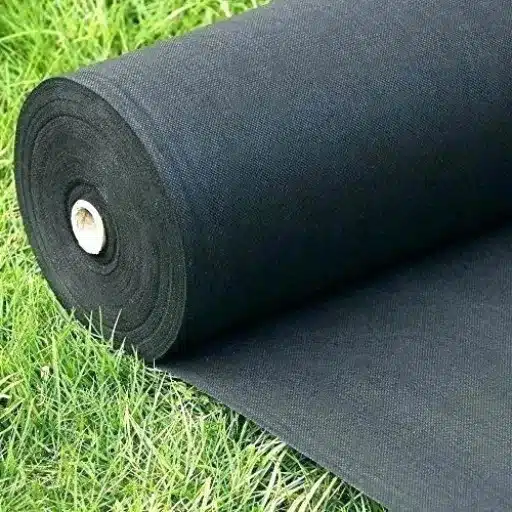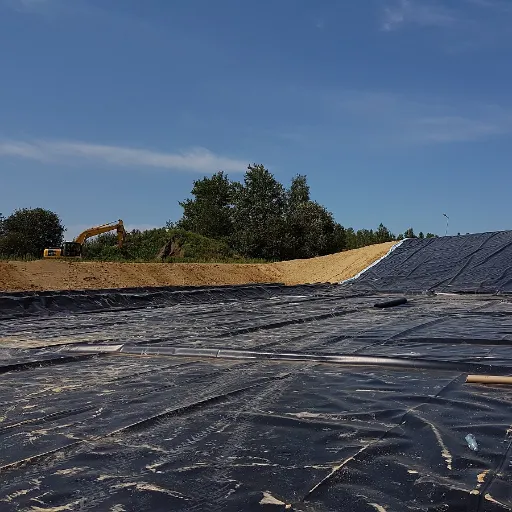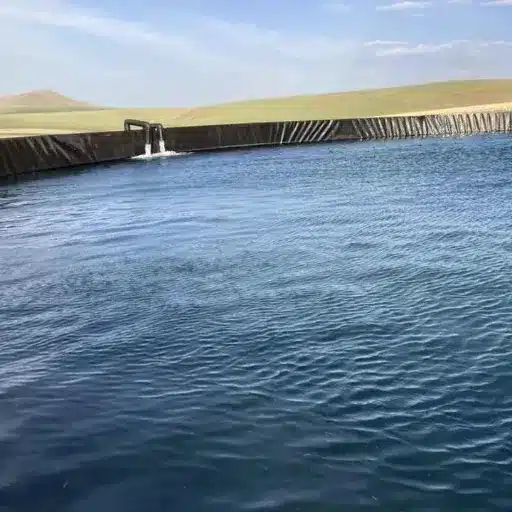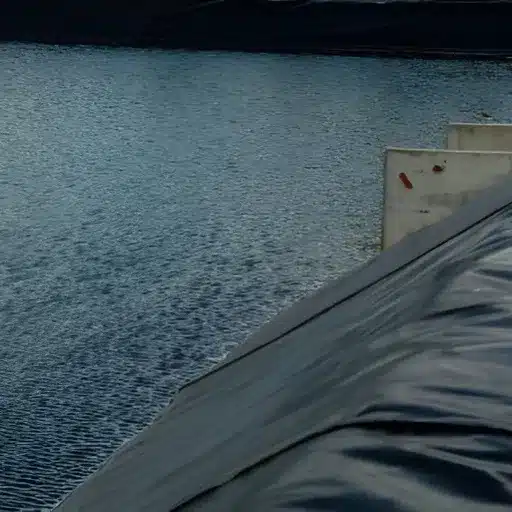Geotextiles have changed the way we deal with construction and landscaping, and also environmental engineering, providing great potential for a variety of applications. They have become indispensable for modern infrastructure projects by using the multifunctional fabrics for soil stabilization, erosion control, and drainage improvement, among others. However, the geotextile’s performance is not the same for all; it varies with the type of fabric, the weave and the application, and hence, it is important to know their intricacies for the best result. This article goes into the realm of geotextiles, exposing their different shapes, the scientific principles of their working and the advantages that they give to both large and small-scale projects. Come with us as we pull apart the major distinctions and find out in what ways geotextiles are advancing the construction industry in an eco-friendly way.
Introduction to Geotextiles
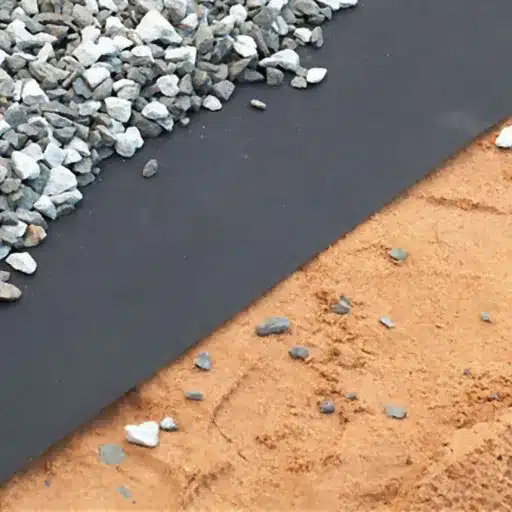
Definition of Geotextiles
Geotextiles are synthetic materials that allow water to pass through them, and are mainly used in civil engineering, construction, and environmental protection. They are made of different kinds of plastic materials like polypropylene or polyester, and perform multiple functions like separation, filtration, drainage, reinforcing, and providing protection. Very sturdy fabrics are specially made to be used even in very harsh conditions, which are the main reason why they are extensively used in the construction of infrastructures.
Geotextiles have three main types: woven, non-woven, and knitted respectively. Woven geotextiles are produced by weaving and hence are the most durable and tough materials suitable for reinforcement and distribution of load. Non-woven geotextiles are made by matting the fibers and then either bonding through heat or applying chemicals making them ideal for nozzles and drainage purposes. Knitted geotextiles, however, are not that common but are made using the yarns of different colors and are mostly used in special cases only.
Importance of Geotextile Fabric in Various Industries
Due to their multipurpose application, long- lasting nature, and efficiency, geotextile fabric is becoming a great necessity in many different fields. Their use can be found in construction, farming, environmental engineering, and transportation. For example, in the construction of roads, the use of geotextiles is very common; they are used as separators, stabilizers, or reinforcement layers, and also help in preventing the soil mixing and maintaining the performance of the pavement. The industry reports for the last year show that the whole global geotextile market accounted for around $9.4 billion in 2022, and the growth is projected at the rate of 10.3% per annum from 2023 to 2030, which is mainly due to the rising need for eco-friendly infrastructure.
Agriculture is the second area or industry where geotextiles have become the most used material. They are being used in drainage, irrigation management, and soil protection as well, that not only allows farmers to control water usage, but at the same time, prevents soil loss and degradation. Moreover, in the environmental sector, geotextiles are being used in landfill lining systems where they act as barriers preventing leachate from contaminating groundwater thus playing a significant role in waste management and pollution control.
Main Types of Geotextiles

Woven Geotextiles
Woven geotextile is a type of synthetic fabric made from synthetic fibers, primarily polypropylene or polyester, which are interlaced to produce a tough durable fabric. This geotextile is particularly well-suited to those applications where the properties of high tensile strength and low elongation are essential. The usage of woven geotextiles is very common in the fields of soil stabilization, erosion control, and reinforcement.
One major benefit of woven geotextiles is that they can prohibit soil erosion, yet keep the soil intact. For instance, in the construction of roads, these textiles are located between the subgrade and aggregate layers, hence the mixing of materials is stopped and therefore the stability of the road is improved. Industrial statistics suggest that the use of woven geotextiles in road construction can prolong the life cycle of the roads up to 50% due to the reduction of rutting and better distribution of loads.
Non-Woven Geotextiles
Non-woven geotextiles represent a major segment of geosynthetics, which are extensively used in civil engineering and environmental engineering applications for their versatility and enhanced filtration properties. Being the opposite of woven geotextiles, non-woven alternatives are produced by the process of bonding of fibers through either mechanical, chemical or thermal means. As a result, the non-woven geotextiles have a very distinct texture and a set of characteristics that make them suitable for various functions including drainage, filtration, separation, and protection.
The new research has brought out the fact of non-woven geotextiles becoming an indispensable part of the soil drainage system and as an anti-erosion agent. Their capacity to sieve very fine soil particles without shutting off water flow, for instance, renders them most effective in subsurface drainage applications. Non-woven geotextiles are said to be reaching up to more than 95% in filtration efficiency for certain environments assuring long trustworthy performance.
Knitted Geotextiles
Knitted geotextiles are a very creative and modern class of geotextiles made by linking loops of yarn to make a strong and flexible fabric. Geotextiles are known for their great strength-to-weight ratio hence, they are mainly used in applications of erosion control, reinforcement, and soil stabilization where their good performance is required. However, the use of knitted geotextiles is different from that of traditional woven or non-woven types since they do not actually provide the disadvantages of both, the tensile strength is very high, but at the same time, flexibility is there.
According to the latest research by tech companies, the tensile strength of knitted geotextiles can be greater than 50 kN/m depending on the selection of yarns such as high-tenacity polyester or polypropylene. Such features make them the right choice for the tough job of slope stabilization, where the preservation of the soil structure is very important. Also, the factor of their lightweight contributes to easier handling and installation, which in turn reduces the cost of labor and project time.
Filtration and Separation in Geotextile Fabrics
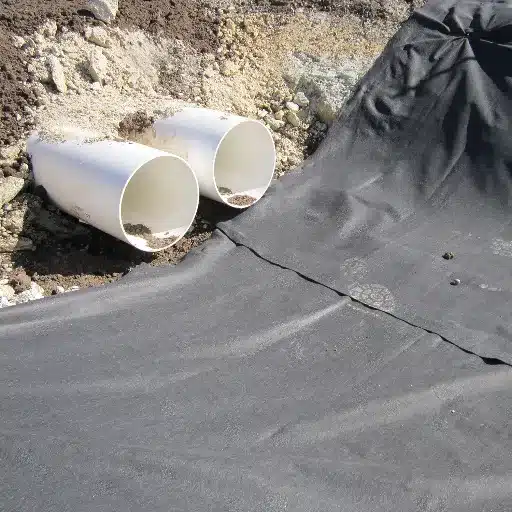
Filtration Properties of Geotextiles
Geotextiles are fluids’ flow controllers and soil particles’ true guardians, thus their application in filtration systems in civil engineering. Their role in the primary filtration process is to allow the passage of water and other liquids while trapping the smaller particles. The overall efficiency of geotextiles in the filtration processes depends on some factors like their pore size, flow rate, and stress due to tension.
Present day geotextiles are normally classified based on their apparent opening size (AOS). To illustrate this, woven geotextiles can have an AOS that varies from 0.15 mm to 0.50 mm, while non-woven geotextiles may go as small as 0.075 mm and as large as 0.30 mm. These differences in AOS make geotextile workability diverse in various soil situations and project plans. On top of that, the gage of permeability of fabrics—the one that is commonly expressed in cm/s—assures that they correspond to the rate of drainage with typical values going from 10^-3 cm/s for the thick, heavy-duty types to 10^-1 cm/s for the light, and high-permeability classes.
Separation Applications in Civil Engineering
Geotextiles are of paramount importance in separation applications in civil engineering projects as they not only ensure the stability of the structures but also the endurance of the structures. Separation refers to the process of preventing the intermixing of different layers of soil, which is the main factor for the stabilization of foundations and the proper functioning of infrastructure development. For instance, in the case of road construction, geotextiles are used between the coarse-grained soil and the aggregate layers so that the aggregates do not get contaminated by the soil, which would lead to a reduction in the load-bearing capacity of the road. According to the studies conducted in this area, the application of geotextiles in the road cannot only result in a reduction of the maintenance costs by 30% but also in a significant increase in the lifespan of the road.
Another application that can be called a critical one is the railway construction where geotextiles are laid under ballast playing the role of a barrier that restricts the upward movement of fine particles while draining the water at the same time. The application of this practice has been reported to result in the advancement of not only the durability of railway tracks but also the reduction of settlement and deformation of tracks that would occur over time. Geotextiles application has also gone extensively in the drainage area applications whereby the separation of soil and drainage aggregates is maintained which in turn ensures efficient water flow and clogging prevention.
Choosing the Right Type of Geotextile
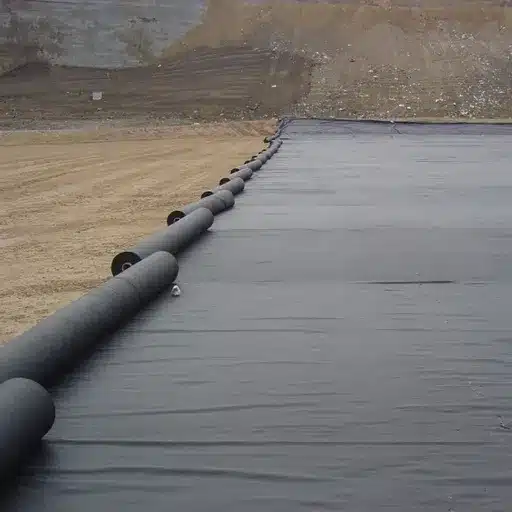
Factors to Consider in Geotextile Selection
Type of Application
One of the most decisive factors in choosing a geotextile is its intended application. For example, in drainage and filtration scenarios, the nonwoven geotextile is the first choice owing to its very high water permeability and also for being able to stop soil from clogging. On the other hand, applications for reinforcement commonly need woven geotextiles because of the latter’s being very strong in tensile strength.
Mechanical Properties
The tensile strength of the geotextile, resistance to tear and puncture are of paramount importance especially in case these projects have requirements of high load-bearing. For instance, geotextiles with a tensile strength of 25-50 kN/m are typically used in the construction of the road to assure the stability.
Hydraulic Properties
Hydraulic properties like permeability and filtration capacity are considered the most important in deciding whether geotextiles can be used in filtration and erosion control applications. High-performance geotextiles routinely possess water permeation rates of more than 10^-4 m/s, presenting an efficient discharge solution combined with the prevention of soil migration.
Environmental Conditions
It is important to have geotextiles with durability under different environmental conditions, such as UV exposure, chemical resistance, and temperature. For example, geotextiles that are UV stabilized can last more than 10 years under continuous exposure to the sun.
Practical Tips for Different Applications
Road Construction and Pavement Stabilization
The nonwoven geotextiles are normally recommended for roads as the fabrics have excellent drainage and separation properties. Recent research has claimed that roads made with geotextiles can have reduced maintenance costs with the extended life of 30% or so. Make sure the placement is done properly to avoid mixing of substrate and the follow overlapping guidelines—generally 12 to 18 inches—to preserve the structure integrity.
Erosion Control in Water Projects
Woven geotextiles with high tensile strength are the anti-erosion arrangement near shores or drainage systems. Evidence points to the fact that geotextiles plus riprap give 60% more sediment holding than riprap alone. For the best effect, fix the cloth in place firmly and give it enough slack so that it does not tear due to water pressure.
Drainage Systems and Retaining Walls
A nonwoven geotextile with high permeability is better for drainage systems in that it will allow the water to flow quickly and at the same time filter soil particles. Studies show that it is advisable to pick a geotextile which has a permittivity greater than 0.1 sec⁻¹ in order to reach the best drainage performance. In the case of retaining walls, geotextiles with good puncture resistance need to be chosen to bear the weight of the backfill material.
Reference Sources
-
Palmetto Industries
- Article: Types of Geotextiles: 11 Types of Geotextile Fabric Explained
- This source offers an in-depth explanation of various geotextile types, their characteristics, and applications, making it a comprehensive guide for understanding the subject.
-
AGRU America
- Article: Comparing Geotextiles
- This resource compares different geotextile types, focusing on their benefits and suitability for specific applications, such as filtration, drainage, and soil stabilization.
-
Everett J. Prescott, Inc. (EJP)
- Article: The Importance of Selecting and Using the Correct Geotextile Fabric
- This blog discusses the importance of choosing the right geotextile fabric for various projects, emphasizing its role in soil separation, stabilization, and drainage.
Frequently Asked Questions (FAQs)
What are the main types of geotextiles?
The principal kinds of geotextiles consist of woven and non-woven types of geotextiles. The production of woven-type geotextiles is done through the interlocking of various materials in a crisscrossing pattern, whereas non-woven geotextiles yield by the bonding of fibers together, thus providing excellent filtration and separation properties.
How do woven and non-woven geotextiles differ?
The making of woven geotextiles involves a weaving process that yields strength and stability; hence their suitability for applications needing high load capacity. Non-woven geotextiles, produced via needle-punching or other bonding techniques, entrap water poorly and are thus cooler and of better quality for filtration and erosion control.
What is a non-woven geotextile?
A non-woven geotextile is a type of geotextile fabric that is made by bonding together fibers with the help of various techniques, one of them is needle-punching. These fabrics are very permeable and are mostly used in civil engineering where filtration, separation, and soil strengthening are required.
What are the advantages of using woven geotextiles?
The advantages that woven geotextiles give consist of very high tensile strength, dimensional stability, and great load-bearing capacity. Their use is pronounced in applications where reinforcement and separation are required, notably in embankment construction and road stabilization.


